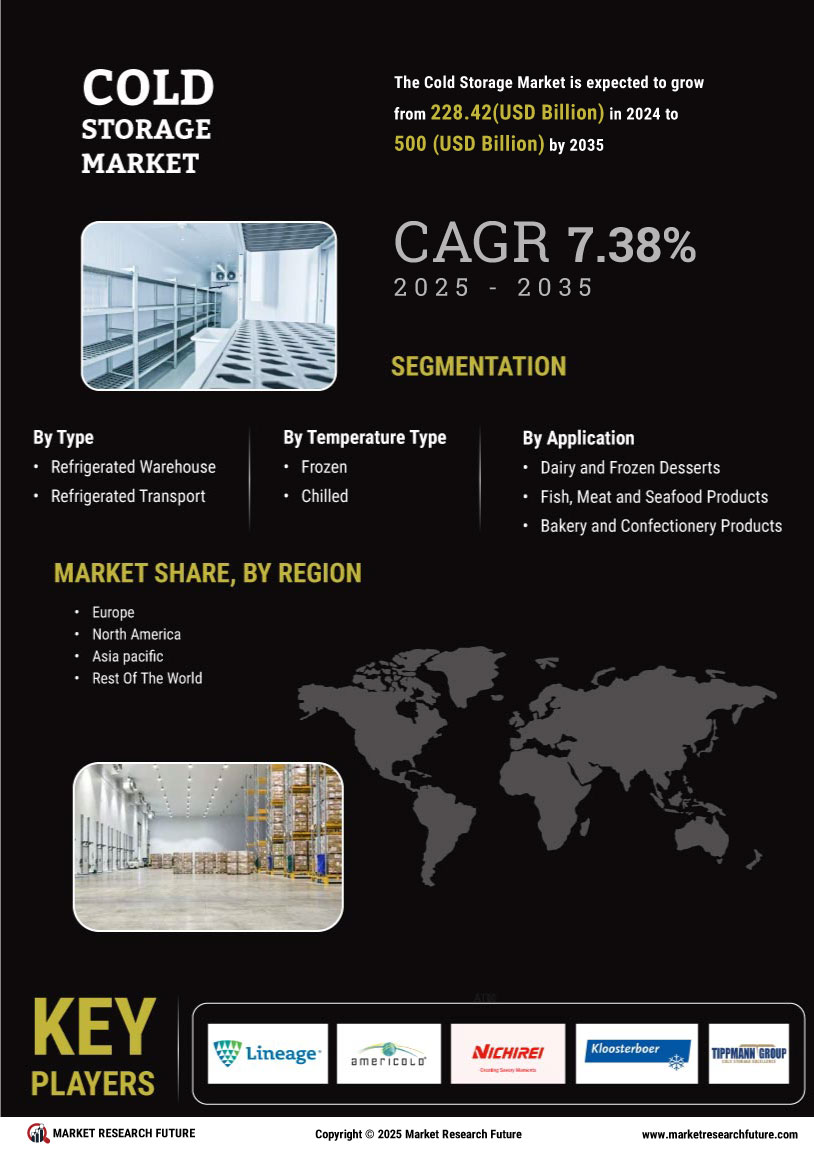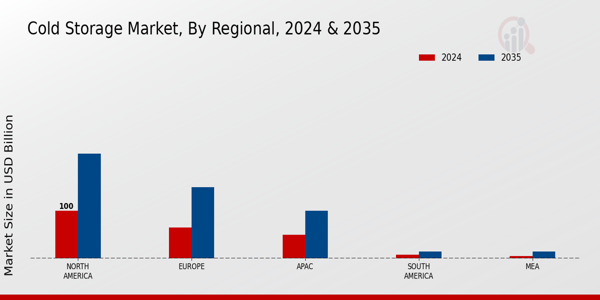The Cold Storage Market is witnessing considerable growth driven by increasing demand for perishable goods, changes in food consumption patterns, and advancements in temperature-sensitive logistics. As the market expands, companies are positioning themselves strategically to capture market share and enhance their competitive edge.
Key players in this sector are focusing on scaling their operational capabilities, incorporating advanced technologies, and optimizing supply chains to navigate the competitive landscape effectively. The growing trend towards e-commerce and the rise of online grocery shopping are influencing the dynamics of cold storage facilities, necessitating an adaptive and innovative approach to meet consumer demands.
Companies with extensive network connections, efficient cold chain management, and robust infrastructure are likely to thrive as the market continues to evolve. Nordfrost has established itself as a significant player in the Cold Storage Market through its robust infrastructure and extensive logistics network.
The company is recognized for providing efficient cold storage solutions tailored to changing market demands. Its strategic placement of facilities enables it to cater effectively to diverse client needs, enhancing its competitive position.
Nordfrost's strengths stem from its commitment to innovation and investment in advanced refrigeration technologies, which ensure optimal storage conditions for a wide range of temperature-sensitive products.
Furthermore, the company emphasizes sustainability in its operations, positioning itself as not just a service provider but a responsible player in the market. This focus on quality service and operational efficiency gives Nordfrost a strong foothold in the highly competitive cold storage industry.
Falcon Cold Storage, another noteworthy entity in the Cold Storage Market, offers a range of services designed to meet the growing demand for reliable cold storage solutions. The company's product portfolio includes temperature-controlled warehousing, ice manufacturing, and logistics support, all crucial for businesses in food distribution and other temperature-sensitive sectors.
Falcon Cold Storage is known for its strategic expansions and partnerships that enhance its market presence, solidifying its role as a key player in the industry. The company has been actively engaged in mergers and acquisitions to bolster its capabilities, enabling it to increase its service offerings and expand its geographical reach.
With a commitment to state-of-the-art technology and customized solutions, Falcon Cold Storage positions itself as a leader in the cold storage domain, reinforcing its strengths through continuous innovation and customer-centric approaches.



















Leave a Comment